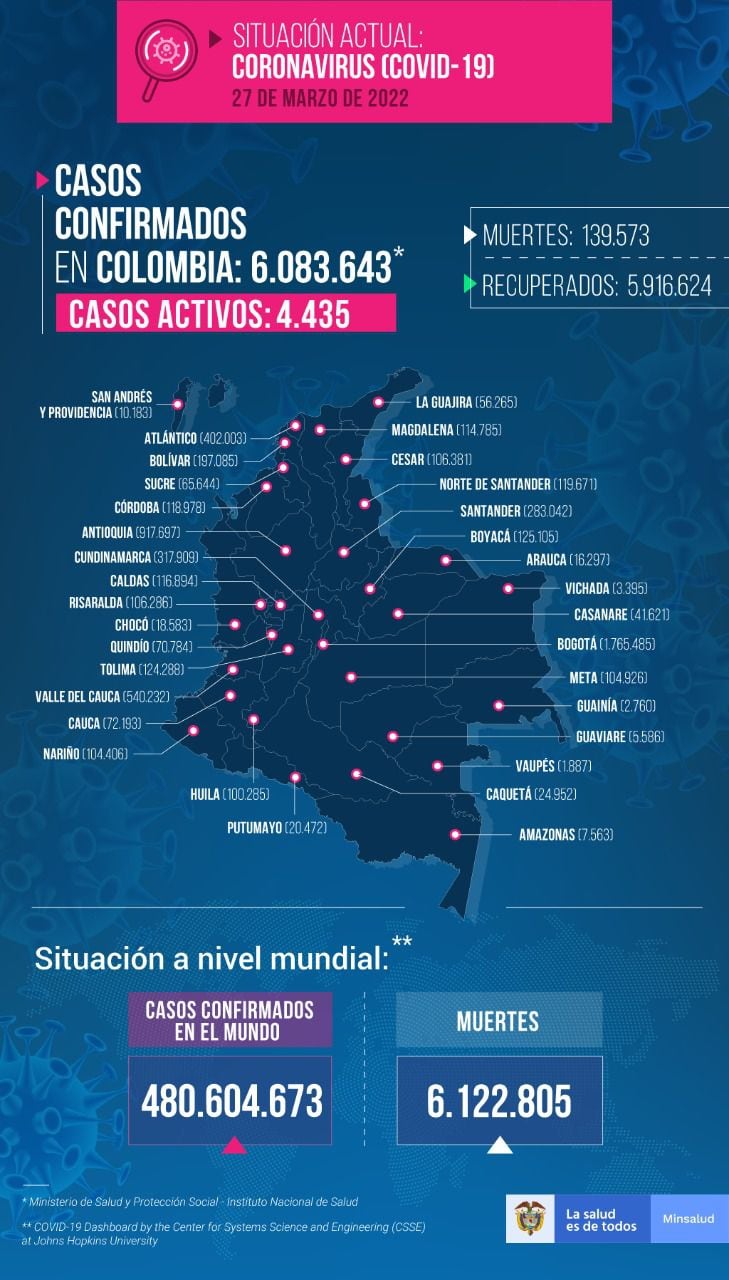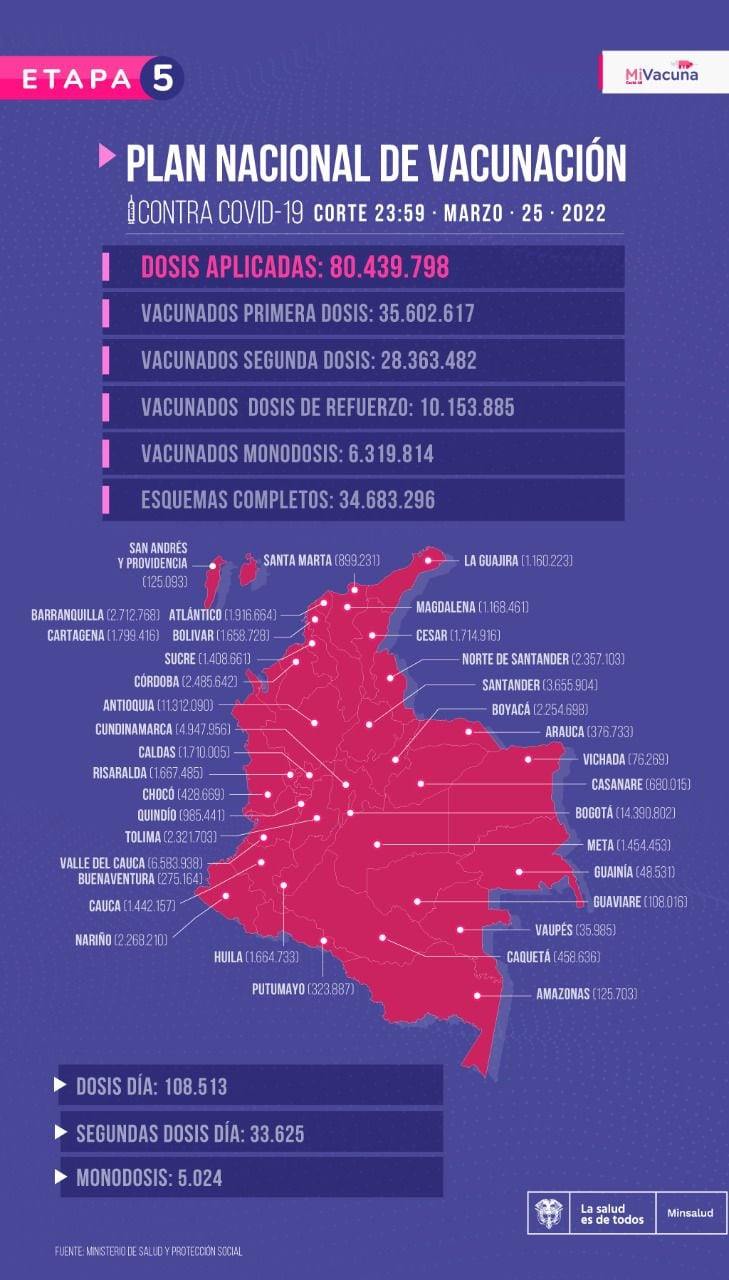
The Ministry of Health reported, this Sunday, March 27, 2022, 352 new cases of covid-19 in Colombia. In the last 24 hours, 25,522 tests were processed, of which 9,803 are PCR and 15,719 are antigens.
The report also notes that 15 Colombians died of the disease in the last day. In this way, the country reaches a total of 139,573 deaths due to the virus since the start of the pandemic.
By aggregating all the figures, Colombia reached a total of 6,083,643 infections, of which 4,435 are active cases and 5,916,624 correspond to positive cases that have already managed to overcome the disease.

As for the regions with the most reported cases, Bogotá leads with 186 infected, followed by Valle del Cauca with 35 infections and in third place Antioquia with 33.

There are 189 conglomerates in the country. The territories are: Amazon, Antioquia (Ituango), Arauca, Atlántico, Barranquilla, Bogota, Boyaca, Bolivar, Buenaventura, Caldas, Caqueta, Cartagena, Casanare, Cauca, Cesar, Choco, Cordoba, Cundinamarca, Huila, La Guajira, Magdalena, Meta, Nariño, North Santander, Putumayo, Quindio, Risaralda, San Andres, Santa Marta, Santander, Sucre, Tolima , Valle, Vaupés, Vichada, Guaviare and Guainia.
This is how vaccination is going in the country
The most recent report from the Ministry of Health also indicates that as of 11:59 on Friday, February 25, 2022, a total of 80,439,798 doses of the vaccine against covid-19 had already been applied in Colombia.
According to the same report, the number of Colombians with the complete vaccination schedule, that is, those who have already received the two doses of the biological, currently amounts to 28,363,482 people, while 6,319,814 people have been immunized with single doses. Also, 10,153,885 booster doses have been applied.
Similarly, during the last day, a total of 108,513 vaccines were applied, of which 33,625 were for the second injection, while another 5,024 were single-dose.

Claudia Cuéllar, Director in Charge (e) of Epidemiology and Demography of the Ministry of Health and Social Protection, gave an overview of the epidemiological situation in the country against Sars-Cov2 and its variants, during the Unified Command Post 125. He points out that since the end of December 2021, the omicron variant is the predominant one in the cases of the national territory, which caused the fourth peak. However, there is a sublineage of this variant before which one should not let down one's guard.
” We must bear in mind that this BA.2 sublineage should continue to be considered a variant of concern and that is why the World Health Organization recommends that close monitoring of the sublineage be maintained; as the National Institute of Health has been doing very well in its genomic surveillance, which is the part of monitoring this variant of omicron”, said Cuellar.
Likewise, it urged the territorial public health authorities to continue the specific monitoring of the BA.2 sublineage, report sequences and carry out analyses of the different sublineages of the omicron variant. He noted that “here in Colombia we have BA.1, there are very few BA.2 and we don't have the third sublinage identified, until now”.
The epidemiological situation
As for the national outlook, which has been stable for several weeks, the official indicated that there is still evidence of how this fourth peak has been steadily decreasing. But, he clarified that, “that does not mean that we are somehow okay, but that we are still in a pandemic, we are in a situation in which we must continue to take care of ourselves to continue to maintain this sustained decline.”
And he concluded by reiterating the importance of the special care that must be taken with the group over 60 years of age, despite the flexibilities in some measures to control the pandemic, as well as with people with comorbidities or who have any risk factors, even if positivity is in sharp decline.
KEEP READING:
Últimas Noticias
Debanhi Escobar: they secured the motel where she was found lifeless in a cistern

The oldest person in the world died at the age of 119

Macabre find in CDMX: they left a body bagged and tied in a taxi
The eagles of America will face Manchester City in a duel of legends. Here are the details

Why is it good to bring dogs out to know the world when they are puppies




